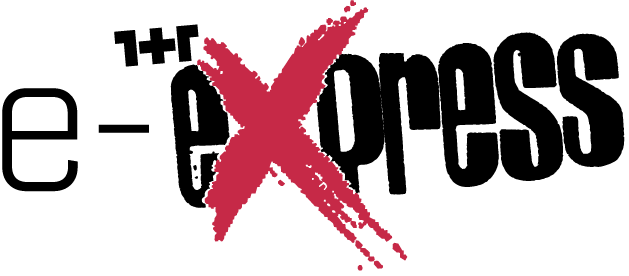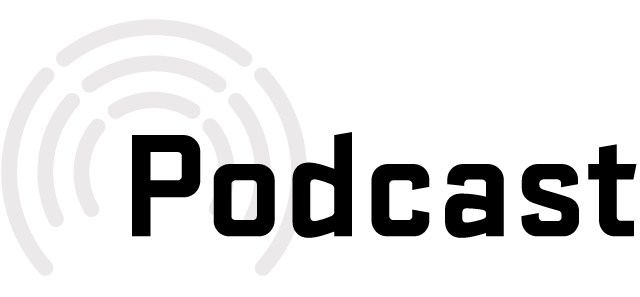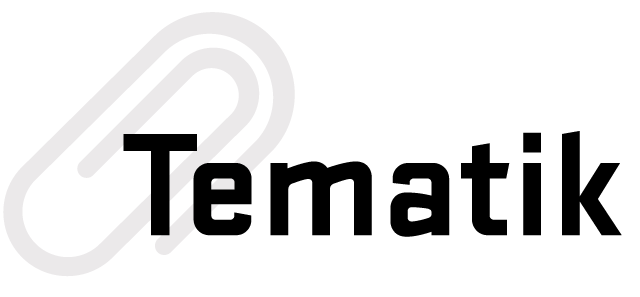The four horsemen of inferno are at a gallop: 1) Structural crisis narrows the electoral support of the AKP-MHP alliance. 2) As the electoral support declines the alliance’s leverage within the power block is diminishing. 3) The pressure on the AKP-MHP alliance to implement the austerity program increases. 4) Austerity reduces the votes of the AKP-MHP alliance… A close shot at the components of the power bloc and the deadlocks of the AKP.

Justice and Development Party (AKP) and the Nationalist Movement Party (MHP) alliance lost local elections in Istanbul on 31 March 2019. For the first time, cultural barriers were overcome, albeit partially, by shifting votes from the AKP electorate to the opposition.
In this article, I discuss the possible consequences of the AKP-MHP alliance’s Istanbul defeat. I suggest that using the conceptual framework of Marxist political theorist Nicolas Poulantzas can help us with understanding Turkey’s current political power structures better. Specifically, I will employ two concepts that Poulantzas used in his analyses: structural crises and power bloc. The main argument I put forward here is that the Istanbul defeat of the AKP-MHP alliance may indicate a mechanism, which may bring the end of the AKP era, has already started.
Structural crisis
Let’s start with the structural crisis. According to Poulantzas, the unique feature of the structural crisis is the combination of the economic crisis with the political and the state crisis.[1] Based on this definition, we can safely argue that Turkey has entered into a structural crisis conjuncture in the post-2013 period.
The scope of the structural crisis concept is not limited to the definition of the technical recession, “economic contraction for two consecutive terms”. Recession is, undoubtedly, an important element of the structural crisis, but in the structural crisis, sustainability of the relations of capitalist production is at stake. For this very reason, the structural crisis conjunctures are also the “crisis of crisis management” for governments.
The concept of the ruling bloc in Poulantzas’s framework includes (i) political parties, (ii) the bourgeoisie and different capital fractions (iii) the bureaucracy. The fact that the power bloc consists of different components is also a reflection of the existence of the multiple power structures in capitalist societies.
The power bloc and its components
The term power bloc has begun to be used frequently in political debate in Turkey recently. However, the widespread use of this term is limited to formal or informal alliances made by political parties. The political regime change that took place in 2018 has had a major impact on the spread of this term. The Presidential Government System (CHS), which was advocated for reasons such as ending coalitions and ensuring stability in the administration, has essentially created a mechanism that encourages political parties to form alliances, since it is based on a 50-percent-plus-one majority. There are two large alliances now: the Cumhur Alliance (AKP-MHP) and the Millet Alliance (Republican People’s Party-CHP, Good Party-IP).
However, the concept of the ruling bloc in Poulantzas’s framework includes (i) political parties, (ii) the bourgeoisie and different capital fractions (iii) the institutional structure of the state, that is to say, the bureaucracy. The fact that the power bloc consists of different components is also a reflection of the existence of the multiple power structures in capitalist societies.
This multiple structure within the power bloc exists under the control of a particular capital fraction. However, there is no simple ‘chain of command’ relationship between the dominant capital faction and other components of the power bloc. Therefore, the concept of ‘relative autonomy’ is also useful for explaining relationships within the power bloc.

The bourgeoisie
The bourgeoisie is mostly the dominant actor of the power bloc. This comes from the privileged position of capital in capitalism. In capitalist economies, both economic growth and creating employment are largely based on private investments. Continuation of private investments depends on profitability. Therefore, economic policies in capitalist economies have to ensure profitability of the firms. This also constitutes the structural power of capital in capitalism.
However, the bourgeoisie is not homogeneous. When classified according to the functions they perform in the capital accumulation process, there are money, commodity and productive capital fractions. If classification is based on the scale of capital groups, there are large and small capital fractions. Alternatively, the different fractions of capital can be defined according to the capital groups’ ideological orientation (conservative bourgeoisie, religious capital, etc.). Regardless of their heterogeneity or classification, all these various capital fractions line up behind the hegemonic fraction of capital. In Turkey this fraction is traditionally represented by the Association of Turkish Industrialists and Business People’s Association (TUSIAD).
Erdogan faces a new dilemma. On the one hand, loss of political majority limits Erdogan’s leverage within the power bloc. On the other hand, the fact that the AKP-MHP alliance includes the bureaucracy makes it difficult for him to leave the MHP and seek a new political alliance.
The concept of relative autonomy defines the relationship between the dominant capital fraction and other members of the power bloc. For instance, the fact that the economic policies violate the short-term interests of the hegemonic fraction from time to time does not necessarily mean that the characteristic of the ruling bloc has changed.
Structural crisis conjunctures are also critical in this respect. Unlike crises stemming from business cycles, structural crises require the direction of economic policies to be redefined. In this respect, this redefinition has to be in line with the long-term interests of the dominant capital faction. When these interests are not aligned, the political components of the ruling bloc may change. This lack alignment is currently causing a growing tension between large capital and the government in Turkey. If the speculations about the cabinet reshuffling, which came to the agenda after local elections, materialized, then, this can be seen as Erdogan administration’s concession. The new center-right political player, which appears to be emerging under the leadership of Ali Babacan, is preparing to be a candidate to implement the required economic programme of the dominant capital fraction.
Political parties
The political wing of the power bloc consists of AKP and MHP. The relative autonomy of the political wing against the hegemonic fraction within the power bloc is based on its capacity to gain the consent of large sections of society. Indeed, the political component has a unique position within the power bloc, as it legitimizes the capital accumulation model in the eyes of the large masses.
However, generating consent cannot be achieved merely on an ideological level. Ideological, political and cultural consent can only produce strong legitimacy when they are supported materially. This model can be described as “neoliberal populism”[2]. When the material part of the consent production is reduced due to the economic crisis, a difficult to reverse mechanism is activated. As the structural crisis conjuncture undermines the neoliberal populism, the autonomy of the political element within the power bloc erodes as well.
The bureaucracy
The characteristics of the new political regime in Turkey, such as party-state integration and the disappearance of separation of powers, have caused the integration of two important components – the political parties and bureaucracy – within the power bloc. At first glance, this integration seems to be a factor that strengthens the hand of the political wing, but in reality it has created a very fragile balance that Erdogan has to consider.
The nationalist alliance, which played a critical role in the transition from parliamentary system to the CHS, also constitutes an important vulnerability for Erdogan’s power. Erdogan’s political dilemma is the following: the nationalist alliance is not only comprised of the MHP but also of the bureaucracy. Although this alliance was established after the June 7, 2015 elections, when the AKP lost its majority for the first time since 2002, it became stronger after the elimination of the Gülenist cadres from the bureaucracy. Yet, the real purge took place especially when the struggles between the political and bureaucratic wings of the ruling bloc turned into an open conflict on July 15, 2016, when a Gülenist affiliated group in Turkish Army attempted to overthrow Erdogan administration.
Failure to implement the austerity program may further damage the relations between the large capital and the government within the power bloc. The dominant faction of the ruling bloc and international investors may turn to new political candidates who will implement their programs.
Erdogan faces a new dilemma when his political alliance lost its majority in the local elections of 2019. On the one hand, loss of political majority limits Erdogan’s leverage within the power bloc. On the other hand, the fact that the AKP-MHP alliance includes the bureaucracy makes it difficult for him to leave the MHP and seek a new political alliance. MHP’s intervention to Erdogan’s newly formulated project to form a “Turkey Alliance” in the aftermath of his defeat in local elections can be interpreted in this context.
AKP’s new vicious cycle
So far, I have tried to explain the current political situation in Turkey by introducing the basic Poulantzasian conceptual framework and by giving some concrete examples. Based on this perspective, I argue that the AKP government faces a vicious cycle similar to the “structural adjustment dilemma” that the political class faced in the 1990s.
It is the structural crisis conjuncture that created the current vicious cycle. In this conjuncture, both economic growth slowed and financial instability increased. More importantly, the AKP’s economic model is exhausted. At this stage, the dominant faction of the ruling bloc and international investors put forward a proposal to implement “structural reforms” as a solution to the economic crisis. The basis of structural reforms is to cut public spending, increase public revenues and implement a tight monetary policy. In short, the structural reform agenda means austerity measures in the short term.

The AKP government was able to postpone the implementation of the austerity measures since 2013. However, negative international financial conditions created a caveat for postponing the crisis this time. Although there are four years until the next election according to the official election calendar, Erdogan’s implementation of this type of austerity programme in the current conjuncture poses a great risk for his own power.
In the last month’s article I pointed out that the tension was increasing between dominant fraction of capital and the government about implementation of a stability programme, when TUSIAD gave an ultimatum to the government. If this ultimatum to implement the austerity measures is not fulfilled, substitution of the AKP may become an option for the dominant fraction of capital. The price increases in diesel oil, sugar, tea and electricity in the week after June 23, 2019 election can be seen as a sign of the austerity implementation, coupled with the huge increase in natural gas prices. Thus, it seems that the following mechanism has already started:
- Structural crisis reduces electoral support of AKP-MHP alliance.
- As this support declines, the alliance’s leverage within the power block is diminishing.
- In this case, the pressure on the AKP-MHP alliance to implement the austerity program increases.
- Austerity reduces the votes of the AKP-MHP alliance.
- Return to number 1!
Failure to implement the austerity program may further damage the relations between the large capital and the government within the power bloc. If the AKP-MHP alliance delays the implementation of the “bitter recipe” on the grounds that it will undermine its own political power, the dominant faction of the ruling bloc and international investors may turn to new political candidates who will implement their programs.
To sum up, the structural crisis causes the AKP’s electoral support to decline, leading to the erosion of its relative autonomy within the ruling bloc. If this erosion continues, it may be the beginning of the end of the AKP era.
[2] Akcay, Ü. (2018). Neoliberal populism in Turkey and its crisis (100/2018; IPE Working Papers). Berlin School of Economics and Law, Institute for International Political Economy (IPE).





